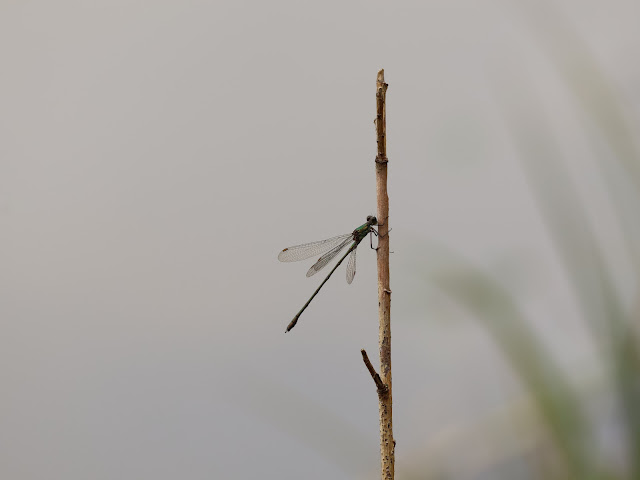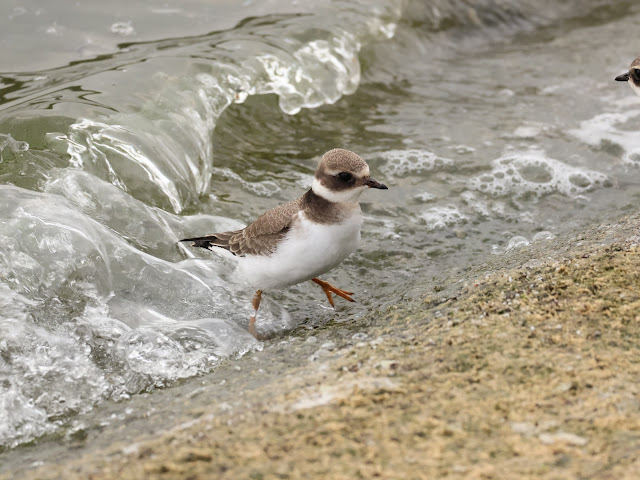Farmoor Reservoir often hosts some 'good' birds at this time of year and earlier this week, there were sightings of greenshank and a little stint. Yesterday's heavy rain also brought in rarities such as Arctic skua and scoters. Sadly I couldn't arrange to get there until today. It had been raining and thundering earlier but looking at the forecast I quickly realised that it was due to dry up midmorning, with rising temperatures and little wind.
I therefore quickly packed a lunch and headed over to the reservoir to see if anything had turned up. The water was very calm and the air had a greyness to it, despite feeling fairly warm. I picked out a yellow legged gull on one of the buoys to add to my year list. On enquiring, I was told that there were a couple of little terns around, and I soon spotted these, twisting and turning over the water as they flew from one side of the reservoir to the other, passing fairly close. However, as the weather brightened they disappeared.
I took my time to cross the causeway, looking out for anything unusual. There were many geese (greylags and Canada geese) all along the shoreline and coots, tufted ducks and mallards in the water. There were also good numbers of great crested grebes, now mostly turning to winter grey and white plumage. However, I didn't spot any waders.
I decided to follow the path all around the larger part of the reservoir, known as F2, I saw a group of common sandpipers, but these were very flighty and I did not get close enough for any photos. There was a raft of cormorants, some little grebes and today the regular flock of approx 50 feral snow geese was also present.
Rather than go back to the car, I decided to go up the causeway again, to see if anything else had turned up. Near to the far side, I caught up with a lady I recognised who was photographing a turnstone off the side of the causeway. It was very confiding and eventually decided to sit down and rest in front of us! Whilst chatting to her, she expressed an interest in seeing some dragonflies, but was unsure where the ponds and hides were so I offered to show her. From the Pinkhill hide we spotted an emerald damselfly, before being confronted with a group of horned calves who appeared amongst the trees and reeds and waded into the water to munch away at the vegetation.
Moving to the Shrike Meadow hide along the Thames Path, I showed her the areas of water separated by a little bridge which was a popular area for dragonflies. We were pleased to see both migrant and southern hawker, together with brown hawkers and ruddy and common darters. Having spent a while there, we headed back to the reservoir and whilst my companion continued around F2, I went back via the causeway once more. I saw someone photographing some small waders, and realised that they were juvenile ringed plovers. Although they did not yet have the orange bill or bright orange legs, they also did not have the yellow eye ring which distinguishes the little ringed plover. They were feeding alongside the turnstone and seemed unworried by my presence as they ran along the water's edge below me.
I'd spent longer than anticipated at the Reservoir, but had added 2 more species which brings my total to 174. I'm close to reaching my 175 target and personal record. Maybe I'd better increase that to 180...




























.JPG)

No comments:
Post a Comment